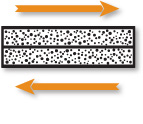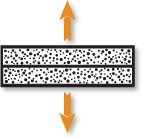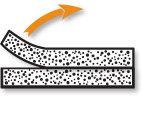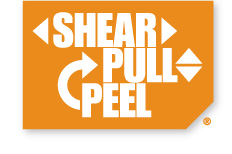Tack vs. Cure
Basic Knowledge
When looking at the bond strength of adhesives, it is important to differentiate the strength of the bond when the substrates are initially bonded from the strength of the bond after the adhesive has cured - Tack vs. Cure.
This page is designed to address the initial bond strength. As we compare the initial bond strength of SIMALFA vs. a solvent based adhesive, it is important to understand tack vs. cure. SIMALFA will tack instantly, while a solvent based adhesive will cure instantly.
We find that the instant tack offered by SIMALFA allows for much more versatility and speed in your production and processes when compared to the instant cure of a solvent based adhesive.
Shear Strength

When we refer to shear strength, we refer to the strength of the adhesive bond while attempting to slide 2 parallel bonded substrates past each other. Both SIMALFA and solvent based adhesives offer instant shear strength.
Pull Strength

Pull strength refers to the strength of the bond when pulling the substrates in a direction that is perpendicular to the bonded surface. Both SIMALFA and solvent based adhesives offer instant pull strength.
Peel Strength

Peel strength is determined by the ability of the adhesive to resist separation when a substrate is peeled up from the edge to remove it from the material to which it has been bonded. This is where we find the key difference between SIMALFA and solvent based adhesives. SIMALFA is designed to allow the substrates to be peeled and repositioned while the adhesive is still wet. This will allow the operators to correctly position and reposition the substrates without damaging them, or having to apply more adhesive. This provides numerous advantages that can help with speed, process, and overall quality. Solvent based adhesives do not allow for this. It is again important to note that once SIMALFA has cured, peeling will result in destruction of the substrates.
